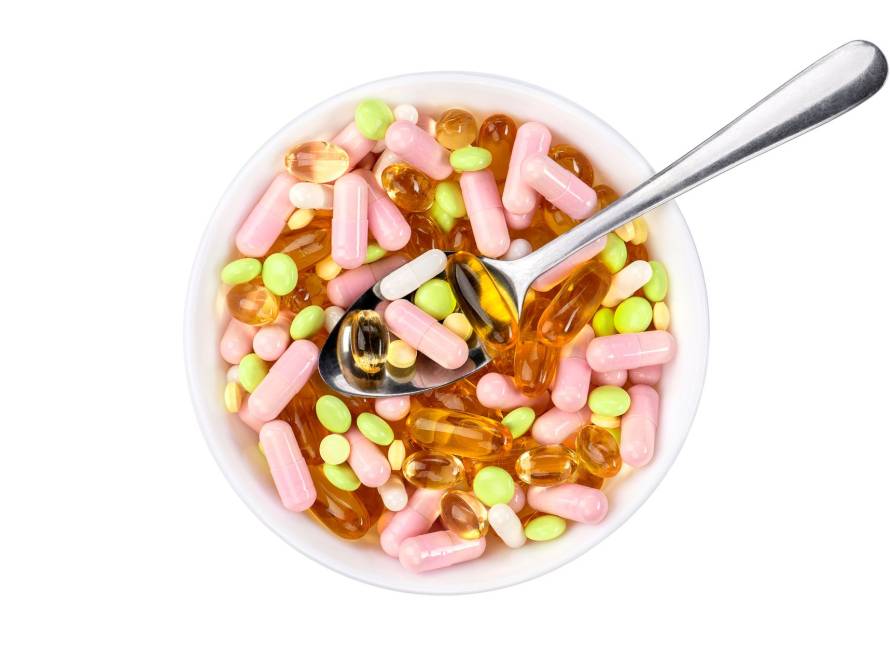People often ask if vitamin A and beta carotene are the same thing. This question comes up a lot in conversations about essential nutrients for longevity. These compounds have distinct properties and functions in our body, though many confuse them.
This piece will explore these nutrients’ key differences, health benefits, potential risks and ways to add them to a longevity-focused diet effectively.
Are vitamin A and beta carotene the same?
People often mix them up, but vitamin A and beta carotene are not the same. These nutrients work differently in our bodies and play unique roles in health and longevity.
Is beta carotene vitamin A?
Beta carotene isn’t actually vitamin A, it’s more like a building block that our body turns into vitamin A. The term “vitamin A” covers a group of fat-soluble compounds that come in two forms: preformed vitamin A and provitamin A. Preformed vitamin A (retinol, retinal and retinoic acid) comes from animal foods and our body can use it right away. Plant sources give us provitamin A carotenoids like beta-carotene, which need to be converted before they become active vitamin A.
Beta-carotene acts as an antioxidant, but vitamin A doesn’t share this quality. This difference shows how each plays its own part in keeping us healthy.
How the body converts beta carotene to vitamin A
Our intestines do most of the conversion work, with our liver and mucosal epithelium helping out. An enzyme called β-carotene 15,15′-monooxygenase (BCO1 gene) changes beta-carotene into retinal, which then becomes retinol.
The conversion process changes by a lot from person to person. Our genes affect how much of this enzyme we make, which means some people convert beta-carotene better than others. The conversion also depends on:
- Food matrix and processing techniques;
- Size of beta-carotene dose;
- Dietary fat content (improves absorption);
- Fiber content;
- Existing vitamin A status;
- Gut health integrity.
Our body adapts the conversion rate based on what it needs, converting more when vitamin A levels are low and less when they’re good.
Why they are often confused
The mix-up happens because these nutrients have similar jobs and names. Both help with vision, immune health, cell growth and reproductive health.
Supplement labels used to show beta-carotene content in International Units (IU) of vitamin A, which created confusion. We’ll often find both nutrients together in “vitamin A” supplements.
These nutrients complement each other in interesting ways. Our body absorbs preformed vitamin A better (70-90% compared to 9-65% for beta-carotene), but beta-carotene has a safety advantage. We can’t get too much vitamin A from beta-carotene because our body only converts what it needs.
Health benefits of vitamin A and beta carotene
Vitamin A and beta carotene help improve human health through biological mechanisms. Research shows these nutrients provide unique yet complementary benefits that enhance longevity and wellness.
Eye health and vision
Vitamin A serves a vital role in vision by forming rhodopsin, a photopigment in retinal rod cells that enables low-light vision. Night blindness emerges as one of the first signs of vitamin A deficiency. Blood levels of carotenoids, including beta carotene, can reduce the risk of developing advanced age-related macular degeneration. Beta carotene helps improve retinitis pigmentosa symptoms and research shows that 9-cis-beta-carotene can boost retinal function while slowing the condition’s progression.
Skin protection and repair
These nutrients support skin integrity differently. Vitamin A prevents skin from drying out and protects against infectious diseases. Beta carotene acts as an antioxidant that helps keep skin healthy and attractive and it can shield skin from UV radiation damage. Diets rich in carotenoids like beta carotene promote skin’s overall health through their antioxidant properties.
Immune system support
Vitamin A remains a vital micronutrient to boost immunity. The body’s mucous barriers in eyes, lungs, gut and genitals trap bacteria and other infectious agents effectively. White blood cells’ production and function depend on vitamin A to capture and clear pathogens from the bloodstream. Children in countries with common measles infections show decreased mortality risk when their vitamin A deficiency gets corrected, according to studies.
Cognitive and neurological function
Scientists now recognize beta carotene’s importance in brain health. Seven out of 10 epidemiological studies associate dietary intake or higher beta carotene serum levels with better cognitive function. Beta carotene’s antioxidant properties help curb oxidative stress, which leads to age-related cognitive decline. Beta carotene boosts Brain-Derived Neurotrophic Factor (BDNF) levels that regulate synapses and support learning and memory processes.
Risks and safety: supplements vs food sources
Vitamin A and beta carotene have different safety profiles, especially when we take them as supplements instead of getting them from food.
Vitamin A toxicity from supplements
We can get Hypervitaminosis A mainly from taking too many supplements rather than from food. Taking over 100,000 RAE in a short time can cause acute toxicity with symptoms like nausea, vomiting, headache and dizziness. Long-term intake above 8000 RAE daily leads to chronic toxicity.
Adult women need 700 RAE and men need 900 RAE daily, with a safe upper limit of 3000 RAE per day, according to research.
Pregnant women should be extra careful. Too much vitamin A during pregnancy can cause birth defects that affect the central nervous system and facial development.
Beta carotene safety and skin discoloration
Our body regulates how beta carotene converts to vitamin A, so it’s usually not toxic even in huge amounts. This means vitamin A poisoning rarely happens from taking lots of carotene.
Taking 20-50 mg of beta-carotene daily for several weeks can turn our skin yellowish. This harmless condition is called carotenemia. Extra beta-carotenes stick to areas where skin is thicker, like palms, soles, knees and facial folds.
How to get the right balance in our diet
Our body needs vitamin A and beta carotene from different food sources because each has its own way of being absorbed.
Foods with vitamin A
Animal sources give us preformed vitamin A (retinol). Beef liver tops the list as an exceptional source. Here are other rich sources:
- Herring and salmon;
- Eggs;
- Dairy shines too, ½ cup ricotta cheese offers 15% DV while a cup of fortified skim milk delivers 17% DV.
Food companies add retinol to breakfast cereals, juices and dairy products. These fortified foods typically give us 10% of our daily needs per serving.
Foods with beta carotene
Red, orange and yellow vegetables get their bright colors from beta carotene. Dark leafy greens pack plenty too. The best sources are:
- Sweet potatoes;
- Carrots;
- Butternut squash;
- Cooked spinach.
We’ll find beta carotene in herbs and spices like paprika, cayenne and cilantro too.
When supplements are needed
A balanced diet gives most people enough vitamin A. In spite of that, some groups might need supplements:
- People with absorption issues from celiac disease, Crohn’s disease or cystic fibrosis;
- Those who can’t access varied foods:
- Pregnant women who need 770 mcg RAE daily.
Tips for better absorption
Our body absorbs beta carotene better with healthy fats. Research shows eating avocado with carrots boosts vitamin A formation 12.6 times more than eating carrots by themselves.
Cooking makes carotenoids more available to our body. That’s why cooked carrots give us more nutrients than raw ones.
The timing of our supplements matters. Take vitamin A supplements during meals that include healthy fats like avocado, nuts or olive oil. This helps our body convert beta-carotene better.
Keep our vitamin A and iron supplements separate because they compete for absorption.
Vitamin A and beta carotene play different yet complementary roles that boost longevity. People often mix them up, but these nutrients work differently in our body. Vitamin A comes ready to use from animal sources, while beta carotene needs to be converted before our body can use it. This basic difference shapes everything from how well they’re absorbed to how safe they are.
Knowing how vitamin A and beta carotene work together helps us make smarter food choices that support our longevity goals. These nutrients aren’t interchangeable, they’re unique compounds that work best as part of an all-encompassing approach to nutrition and health.


